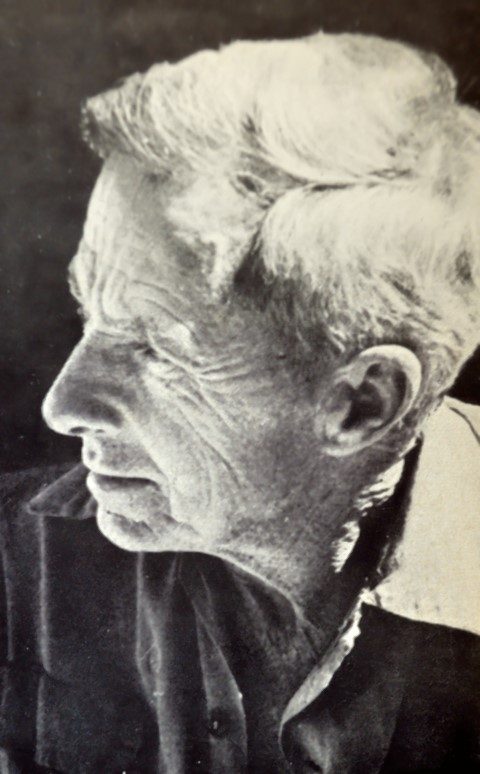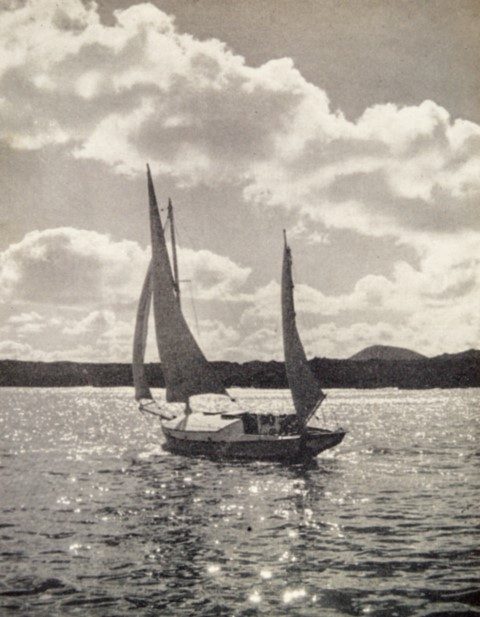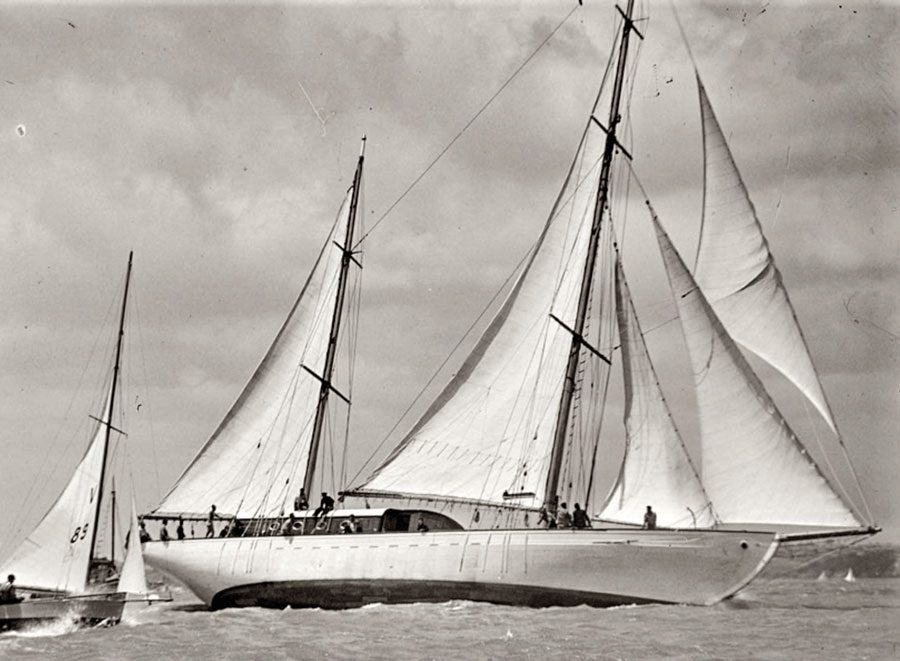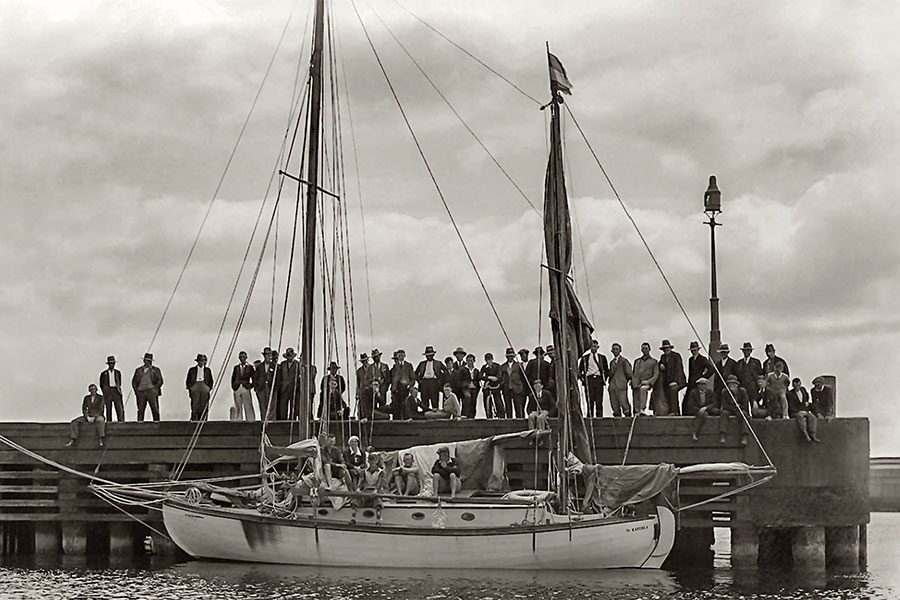

If you’ve never experienced the serenity, mystery and romance of bluewater cruising, Frank Wightman’s books offer a rivetting substitute. Story by Matt Vance.
At five-foot-two-inches Frank Wightman was a short bugger. He also happened to be a cable operator, naturalist, archaeologist, hermit and lucky for us, a sailor and a writer. His writing won no awards, nor was he feted in literary circles, but he managed to produce two books which are the most beautifully-written love letters to an ocean there has ever been.

Frank spent a lot of time dreaming about his escape to sea, spending over 20 years in the “march of the slaves” as he referred to the shallow existence of a nine-to-five wageworker in Cape Town. His escape from this “Amazon of frustration” came in the most simple and concise way.
“At Noon one day I dropped my fountain pen – that symbol of slavery – into the waste paper basket and capered down the marble stair case into the sunlight.” That step into the sunlight was to define the rest of his life and unleash one of the most underrated literary talents the world has ever seen.
In 1936 Frank had met the famous single-hander Harry Pidgeon as he stopped over in Cape Town during his first circumnavigation. Harry’s yawl, Islander, was a Seagoer design which had been published in the popular Rudder magazine.
Frank liked the look of Islander, purchased the plans and over the next 12 months built Wylo behind the Royal Cape Yacht Club. Wylo was nothing much to look at with a flush deck and hard chines, yet with her stout construction and seakeeping abilities she was Frank’s dream ship; a dream that endures to this day.

Having escaped the rat-race and built his beloved boat, Frank was snookered by WWII. He was posted to the Navy and endured a war of boredom while Wylo lay rotting in Cape Town. By the time he was discharged from the Navy and had resurrected Wylo it was early 1947 and Frank and his shipmate Graham Young were ready for the adventure of their lives.
The voyage to the Caribbean was full of the highs and lows an ocean voyage can offer. Somewhere along the way, Frank decided to take notes and it was from these that he began to piece together the idea of a book. What could have been a dry account of a perilous voyage was catapulted into art by Frank’s hidden talent for writing.

Frank was a consummate observer of the ocean and of the lives of men – in the league of Joseph Conrad. His chapters are littered with little epiphanies and shimmering philosophy.
His simple description of emerging from a rain squall is transformed into art: “Then I turned to look at Wylo. As I did so a new beauty declared itself: a breathless stillness – a sunny breathless stillness in which the music of the scuppers tinkled a pastorale.”
His ability to attune all the senses in his experience of the sea was unrivaled: “And the sounds! Those around Wylo have the quality of excitement. The water sounds rise from a soft sibilance to a shrilling. The winds note in the rigging resembles a girls’ chorus, ‘Humming’; and from somewhere there comes the sound of strings plucked strongly-once.”
Observing himself in all this watery miracle was perhaps where Frank Wightman most shone. He had the courage and the conviction to openly ponder his place in the universe.

“I had decided that solitude at sea is a strange thing: you are diminished, yet you become much realer to yourself – as you do in a dream. You live your life in the presence of something that makes no acknowledgement of you, but knows you are there. There is between you and the ‘understanding’ that exists between you and the thing in a dream; tacit and compulsive, not proclaimed until you blunder.”
It was not only the sea that came under Frank’s compulsive gaze. In his later years he moored Wylo in the seclusion of Kraal Bay on South Africa’s southern coast where he had prepared Wylo before his first voyage. Here too he was able to document his falling in love with a place, a hard, arid beauty that offered miracles to his sensibility and in the end became his final resting place.
His adventures in both his books are written in a way that nourishes the soul. They are the ones I read again and again, especially if a life of landlubbing is taking its toll. With his resources limited, it is sailing and living in its purest form and this is perhaps the reason his work is so good for the sailor’s soul.

You get the feeling that Frank has thought about things for a long time and distilled them through his considerable intellect. Reading his words, you get a strong sense of being privileged to watch over his diminutive shoulder at the mysteries of the world and the beauty of the ocean.
Frank’s second book – Wylo Sails Again – is perhaps even better than his first. Having sold his beloved Wylo in the Caribbean, he returned to South Africa and to the world of cities and to the pettiness of life on land. He wrote The Wind is Free and with the first royalties cabled Wylo’s owner in Trinidad. “Will you let me buy Wylo back? Her owner Tookie Collens simply replied “She’s yours.”
As Frank said: “The incredible had happened. The first time the prison door opened to me it was because I had spent twenty years tinkering with its hellish lock. This time it was sheer luck. For who would have thought I could write a book?”




